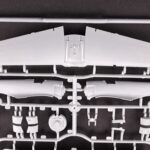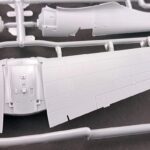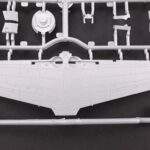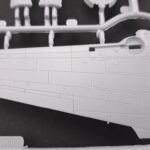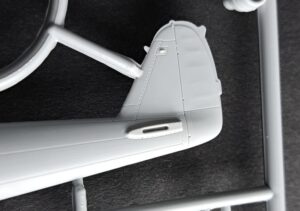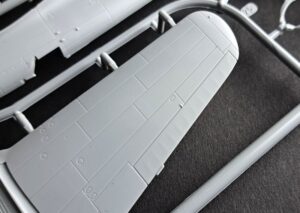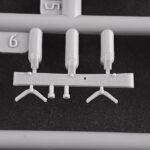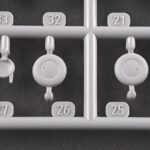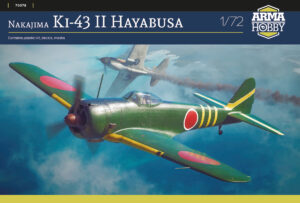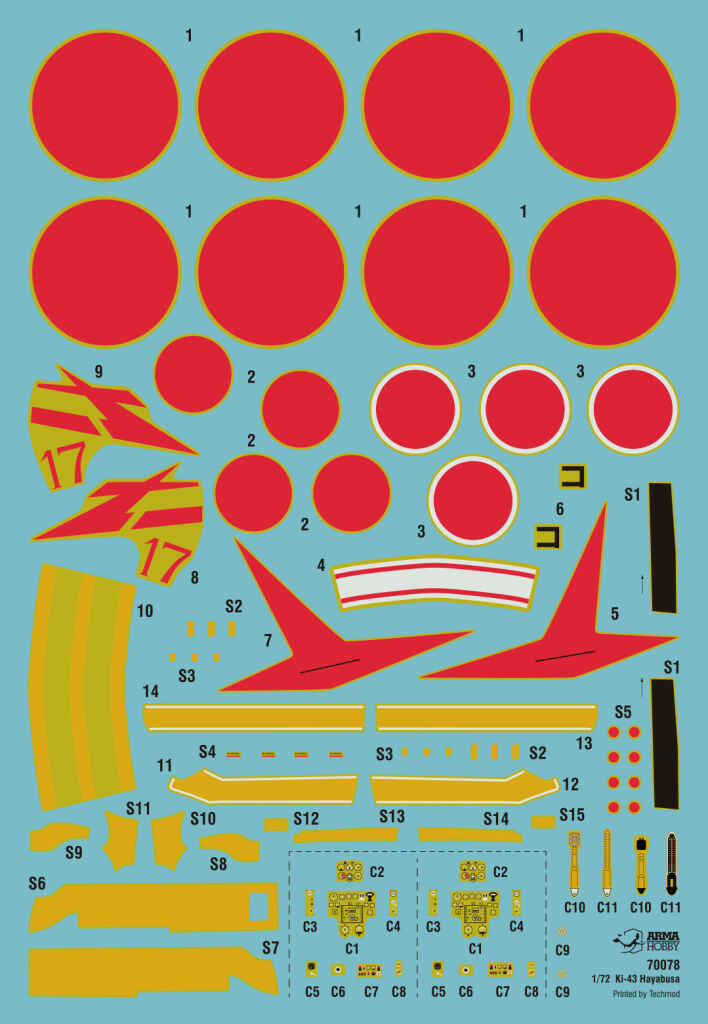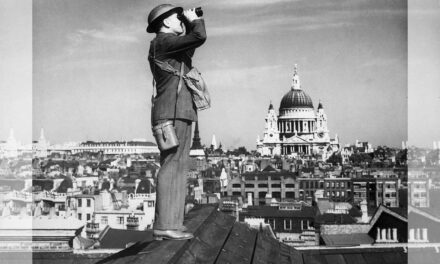
We are slowly digging out from fulfilling pre-sale orders for our latest kit – the Ki-43 II Hayabusa in 1/72 scale. There were a lot of these orders, and many of you also took advantage of the promotional option to order additional sprues (called ‘overtrees’) and 3D resin prints to superdetail the model.
Thanks to intensive work, including over the weekend, many kits have already made it into your hands! We are already getting the first positive feedback from you. And I only now have the time to do a proper inbox of this kit. You are warmly invited, it is just time to take a look at the box. And soon Marcin Ciepierski will publish an article with tips to make assembling this model easier!



Sprue A
The sprue A includes mainly the largest parts of the model, such as the wings and fuselage, but also a lot of small parts. In designing this model kit, we set ourselves the task to best express the character of this famous aircraft – its lightness and filigree, which gave it its legendary manoeuvrability and climb. The impression of the model’s lightness is largely determined by the thin edges of the wings and empennage, which is not easy to achieve with injection moulding technology. Initially, the thin wings and tail had short-shots; we could have made them thicker, but we didn’t want to. As a result, the parts remained beautifully thin and filled fully, but due to the need to increase the injection pressure, there were flash in some places. However, these are easily removed.

As you can see in the photos, the recessed panel lines are even and thin. The surface of the aircraft gives the impression of being surprisingly smooth: The Hayabusa, as ordered by the Imperial Japanese Army, had very limited equipment, so it didn’t have many access panels and the associated clips, screws, etc. of surface variety. And those that did appear were very fine, and we decided to reproduce only the most prominent of these, such as the screws on the engine cowling or on the bomb racks, to keep the effect of scale.
We reproduced the fabric-covered control surfaces very subtly, just as they looked in the real aircraft.
Sprue B
Sprue B is smaller and contains only the finer parts. It is worth noting the details: the screws on the bomb racks, the instrument panel, both engine rows, the wheels, the seat…. Also on this sprue, the control surfaces have a very sharp trailing edge and a fine representation of the fabric-covered surfaces.


Clear sprue
The clear sprue is very fine and thin, so we wrapped it in extra plastic bag to protect the glossy surface from scratches.
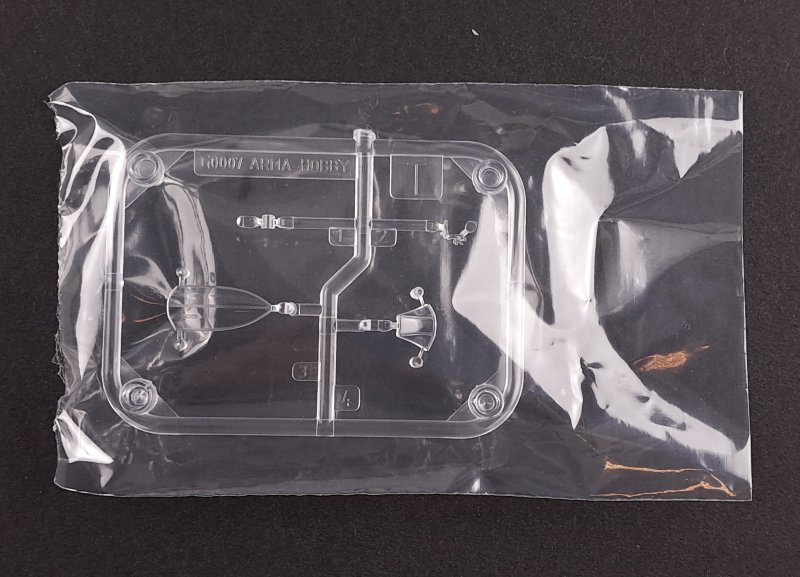
When unpacked, it is easy to see how finely crafted the canopy and framing is. It seems to us that this is the best canopy we have made so far. On the sprue you will also find the landing light glazing and gun sight.
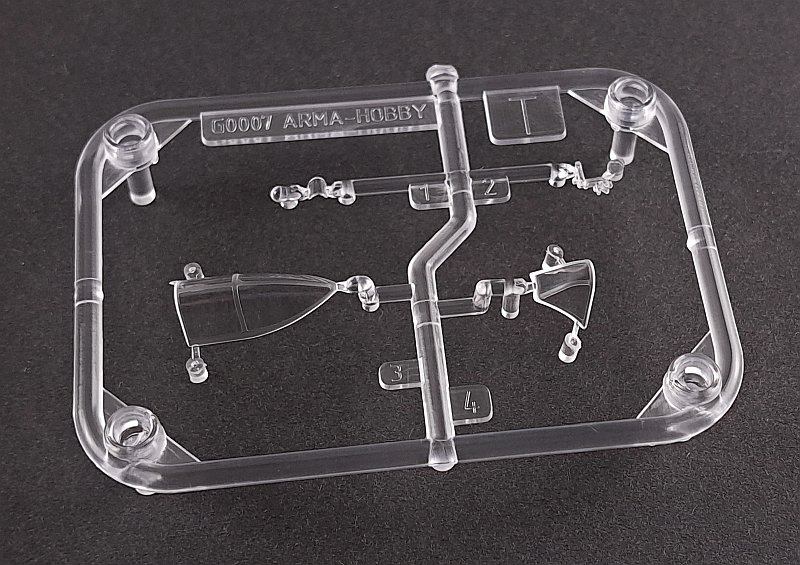
Decals and masks
 The manufacturer of the kit decals, ensuring their highest quality, is Techmod. The kit includes a substantial sheet of decals for three aircraft, differing not only in markings but also in the type of camouflage – or lack thereof, as in the case of the aircraft in natural metal colour. We decided not to save any space and included double Hinomaru markings in the design, as well as doubled decals for the aircraft interior details (e.g. the instrument panel) so that they could be used to build a second model, from extra sprues (so-called overtrees) bought on promotion.
The manufacturer of the kit decals, ensuring their highest quality, is Techmod. The kit includes a substantial sheet of decals for three aircraft, differing not only in markings but also in the type of camouflage – or lack thereof, as in the case of the aircraft in natural metal colour. We decided not to save any space and included double Hinomaru markings in the design, as well as doubled decals for the aircraft interior details (e.g. the instrument panel) so that they could be used to build a second model, from extra sprues (so-called overtrees) bought on promotion.
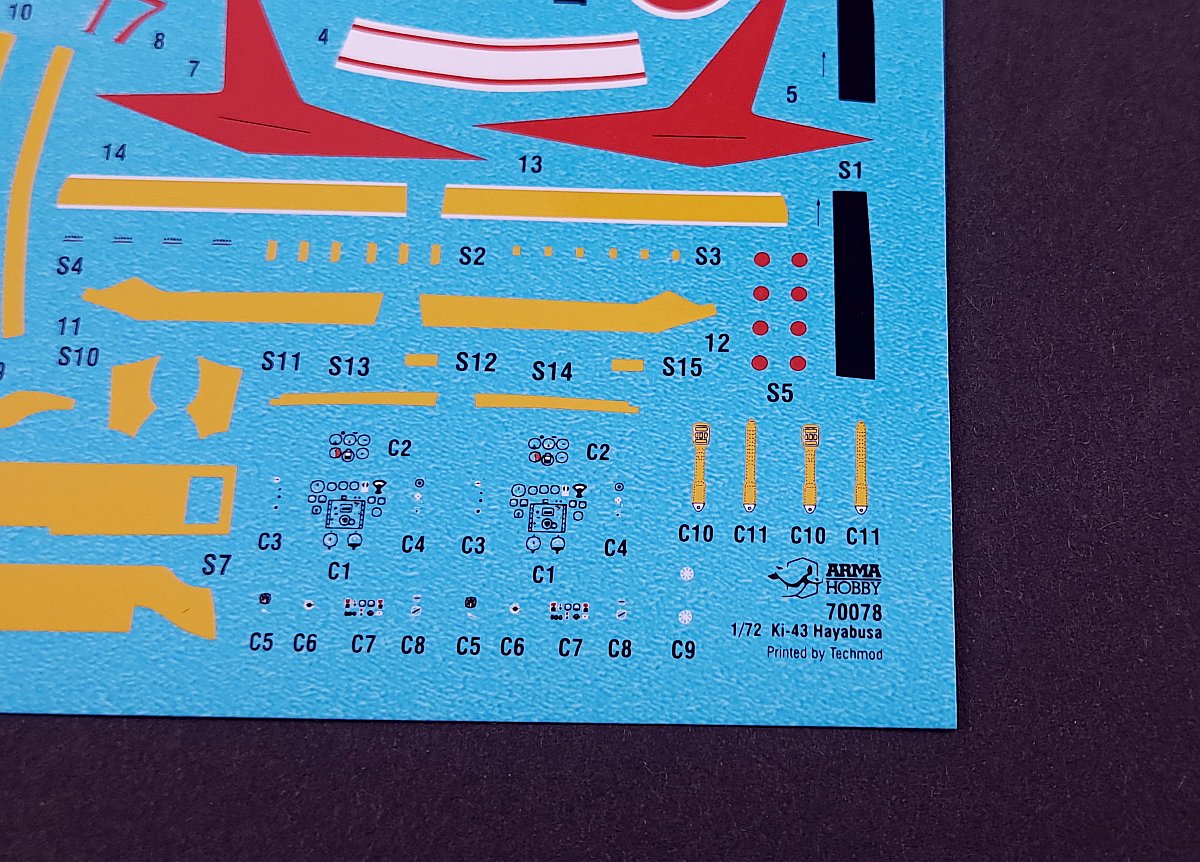
Self-adhesive masks are also an aid to the modeller, making it easy to paint the canopy and wheels. We have already written more about the decals and masks of this model in the article linked below.
How was the Ki-43 Hayabusa model developed?
If you are curious about how the Ki-43 Hayabusa model was developed and why it looks the way it does, read Wojtek Bulhak’s article:
Check also:
- Buy 1/72 Ki-43 Hayabusa kit online at Armahobby.com!
Ki-43 Hayabusa – modele z wyprasek testowych – Wojtek Bułhak
Modeller, son and father of a modeller. Loves digging through references and analysing old photographs. He builds aircraft, ship and vehicle models, the older the better. He has a weakness for Polish equipment, but does not despise the RAF, FAA and Great War topics. A journalist by training.
This post is also available in:
 polski
polski


